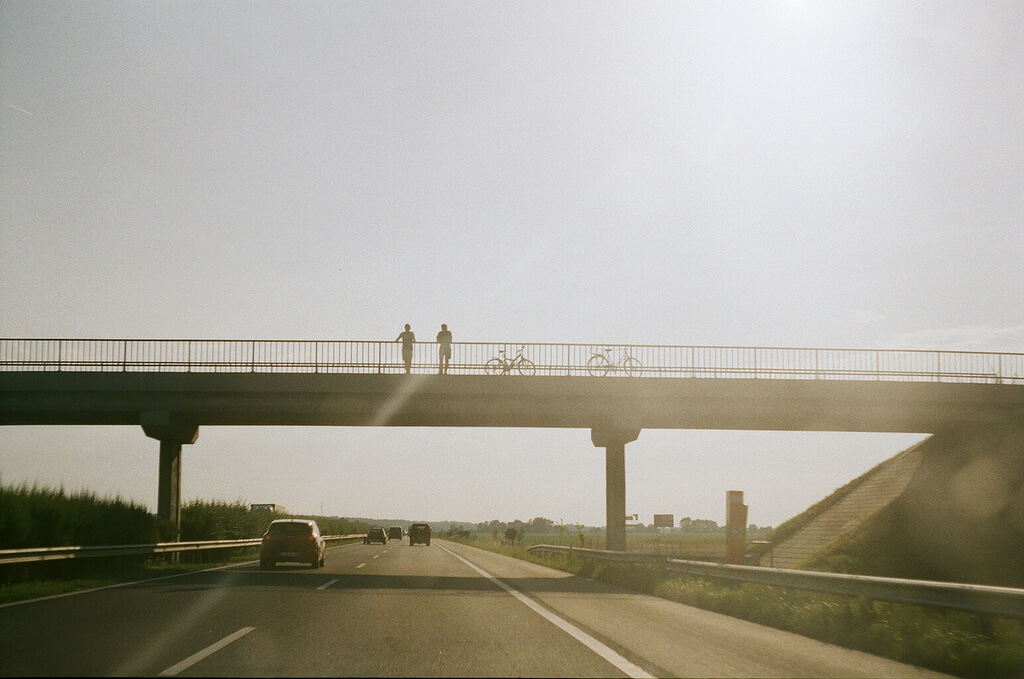Autumn Gear Guide
Find inspiration in our Gear Guide that will keep you out on your bike through wind or rain.
Download NowThe Developing a Reliable and Innovative Vision of the Economy Act is not innovative enough to meet evolving North American transportation demands.

Photo by Jamison Young
The US Senate recently introduced a new transportation bill that is set to work its way through Congress in the coming weeks. The Developing a Reliable and Innovative Vision for the Economy Act, or DRIVE Act, is – as the acronym suggests – largely focused on vehicle transportation. Particularly, it sets out a six-year vision of US transportation that includes improvements to the interstate and highway system, with few provisions for multi-modal transportation.
On the heels of DRIVE’s release, the League of American Bicyclists published an analysis of the act, noting, “While we were successful in getting some small changes to the Transportation Alternative Program (TAP), we do not see any real innovation or vision to really grapple with transportation needs of this 21st Century.”
The League’s basic summary of the act is as follows:
The League notes that the act does include some positive features, such as an electric car corridor section, eligibility of Intelligent Transportation Systems, a mention of the NACTO guide in the design standards, and a few changes to to the TAP program that would deliver positive results to varying degrees. However, they ultimately conclude, “the big takeaway is this bill is not a coherent vision of the future, or even of the present.”
While the provisions of the DRIVE Act are unsurprising given the history of American transportation policy, they are still disappointing given the possibilities of its future.
The marginal improvements brought forth in the bill are simply that, marginal. For the most part, the DRIVE act simply maintains the status quo with respect to road and highway policy. It expands upon a vision articulated by Dwight Eisenhower in the 1950s and labels it “an innovative vision for the economy,” when it is indeed quite the opposite. It represents a stagnant vision of economic development that simply accepts the way things are rather than pushing towards the way things could be.
More importantly, it just doesn’t make much sense.
Matt McFarland, editor of Innovations at the Washington Post, wrote in a recent article entitled “Why cycletrack networks should be the next great American transit project,” that the US’ endless fixation with the automobile has resulted in the country being left in the dust on measures of health and safety by countries who have focused on multi-modal transportation. “In 1970 the United States and the Netherlands had similar rates of traffic fatalities per 100,000 residents. Then the Dutch began emphasizing multi-modal transportation, such as biking. Now the Netherlands’ fatality rate is 36 percent of America’s.” McFarland also mentions America’s growing obesity epidemic, climate change, and the waning independence of American youth as impetus for US policy-makers to start taking cycling infrastructure seriously.
If the Senate truly wants to develop a reliable and innovative vision of the US economy, they need to look beyond the short-term gains offered by freight and highway systems to the long-term benefits of increased investment in sustainable transportation.
The economic benefits of investment in cycling range from the short-term (cycling infrastructure is a fraction of the cost of automobile infrastructure, bike lanes increase earnings for local businesses, biking significantly reduces families’ transportation costs) to the long-term (Portland expects to save between $148 and $600 million a year by 2030 because of the investment in cycling). Factor in the absolutely unprecedented costs of climate change – exacerbated daily by our continued reliance on automobiles – and you have yourself a pretty fail-safe economic argument for investing in cycling infrastructure.
But the full extent of those benefits can only be realized if people actually start riding their bikes. It isn’t the lack of bike lanes that prevents most people from riding bikes, but the lack of safe, well-maintained, protected bike lanes. McFarland cites a study undertaken by the National Institute for Transportation and Communities, which looked at the the growth in bike traffic after protected bike lanes were added to nine US roads. The growth rates ranged from 21 to 171 percent.
A bike lane that is simply painted onto a busy road and ends after eight blocks is okay for somebody who is already comfortable cycling, but does little to encourage more people to ride. To make an honest effort at tackling many of the socio-economic issues the US faces while recouping the numerous benefits of biking, policy-makers need to move beyond the vision of sprawling, connected interstate highways to a vision of sprawling, connected, and protected bike lanes.
Find inspiration in our Gear Guide that will keep you out on your bike through wind or rain.
Download Now
Leave a comment